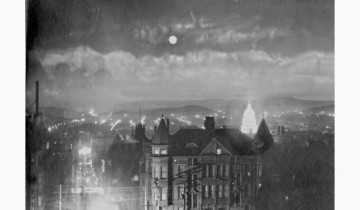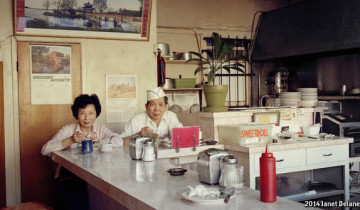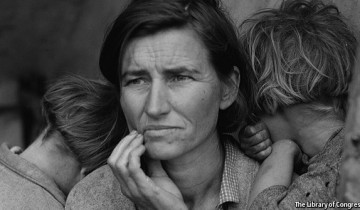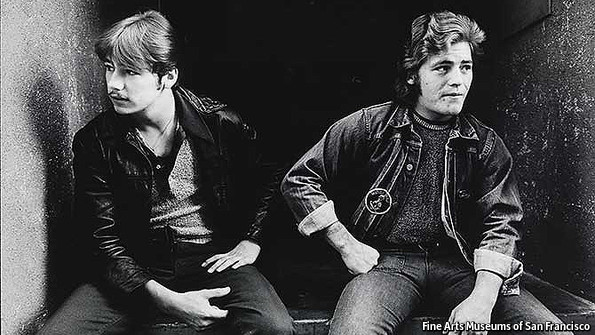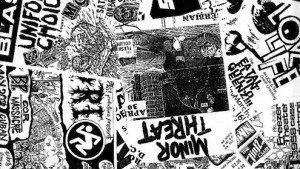 Promotional fliers for rock shows typically end up in the trash. But David Ensminger collects them. He’s stockpiled them for more than 30 years, documenting a Xeroxed history of punk gatherings, an anthropologist of punk rock’s printed images and text.
Promotional fliers for rock shows typically end up in the trash. But David Ensminger collects them. He’s stockpiled them for more than 30 years, documenting a Xeroxed history of punk gatherings, an anthropologist of punk rock’s printed images and text.
The do-it-yourself tradition of punk-rock fliers are just part of his new book, “Visual Vitriol: The Street Art and Subcultures of the Punk and Hardcore Generation”, published by the University of Mississippi Press. The book covers punk’s cultural crossover into graffiti and skateboarding, and includes insight into queer, female and Hispanic punk scenes.
To promote the book, Mr Ensminger organised a travelling exhibition of punk-rock gig posters and fliers. The wall-sized collage, assembled recently at Rough Trade East in London, embodies a mostly American, anti-authoritarian sensibility from the 1980s. (The fliers include calls to “Rock Against Reagan” and vote for
“[Jello] Biafra For Mayor”.)
Mr Ensminger plays with The Biscuit Bombs and No Love Less, and founded the punk zine Left Of The Dial. He teaches folklore, composition, and humanities at Lee College in Baytown, Texas, and he runs websites that archive the history of female punks and black punks, and punk scenes in Florida, Texas, California, New York City and America’s midwest.
What makes a book about ‘80s punk rock timely and relevant in 2011?
As the world leans more heavily towards digitised forms and virtual representations, the book highlights handmade, do-it-yourself, vernacular and deeply democratic works on paper. As the old economy of paper products and industry gives way to the information economy and social-media platforms, fliers posted on light poles seem so “last century”. Google has digitised innumerable books; I have digitised well over 1,500 gig fliers.
What makes concert fliers from punk shows so significant?
Fliers were microcosms that speak indelibly about the economics of the underground. From cut-n-paste guerrilla style to utilitarian blandness, [they capture the] psycho-geography of scenes, the location of the clubs, and the fuzzy ideologies of the community in handwritten rants and graphic fare.
Why do you collect them?
Documenting the fliers means preserving the works on paper of myriad anonymous artists meant to be short-lived. It also means using the fliers to document the participation of women, people of colour, and gays and lesbians in the multicultural punk sphere. I curate a whole blog dedicated to the work of Randy “Biscuit” Turner, a rare “out” gay punk-funk pioneer who made well over 100 gig fliers for his band the Big Boys without utilising typewriters or computers. He relied entirely on inky illustration, cut and paste, collage, mixed media and the rigors of copy machines. Black people didn’t immerse in punk? Think again. I have over 250 fliers of bands playing gigs with black members, and that’s just the tip of the iceberg.
What does the newer Muslim punk scene have in common with the ‘80s punk discussed in your book? What’s different?
Muslim punks prove that punk is a convergence culture shaped by pluralism, not middle-class Anglo aspirations. They really test punk’s true dictum—to extend freedom—and push people to recognise punk as a vehicle of power that recognises no border.
You write that skateboarding in the 80s was “genuinely empowering.” Is it still?
Skateboarding is still quite restricted in many areas, a kind of fugitive act, especially as cities become much more monitored and space becomes much more contested. Skateboarders still seize pedestrian, industrial, recreational and municipal spaces to re-imagine use and topography, sport and theatrics.
Did your work collecting punk literature and art lead you to your current academic career?
Five years ago I returned as a student at the University of Oregon, under the helm of the folklore programme, where I sought a second masters degree under the guidance of Daniel Wojcik, a well-admired folklorist and former punk himself. In the 1990s he penned a book on punk’s transgressive qualities, including tattooing and piercing. During the programme I realised I had been pursuing folklore my whole life, documenting vernacular art and street art for years.
How do you explain flier culture to people unfamiliar with it?
Fliers were an essential part of the process of stirring culture from below. Fliering was not just a solo process, some lone kid stuck in the basement, using Adobe Illustrator or other programs. It was dirty and dishevelled, hands-on, faulty and frail. Plus it created a sense of lore—from The Clash wheat-pasting London in times of strife to people being chased for vandalism here in the [American] South. Plenty of discontent flows through digital avenues as well, but will it resonate like the furore and discord the Sex Pistols unleashed? Jamie Reid, who designed the album art for “Never Mind the Bollocks”, is now just another artist appropriated and remixed, and he himself borrowed plenty from earlier art movements, but that shock value is difficult to repeat.
“Visual Vitriol: The Street Art and Subcultures of the Punk and Hardcore Generation” by David Ensminger is published by the University of Mississippi Press and is out now.
The full interview is at THE ECONOMIST and also at INTELLIGENT LIFE
